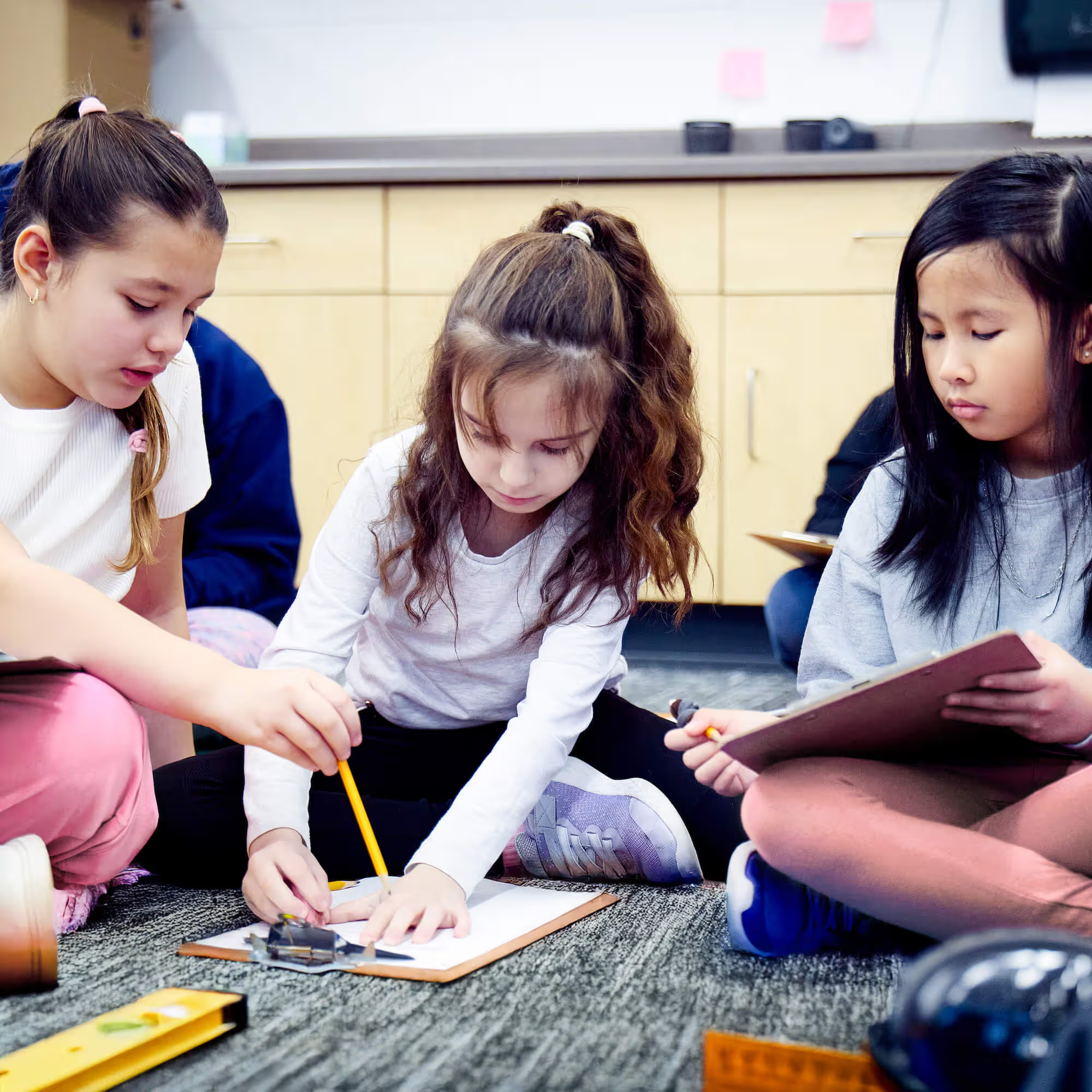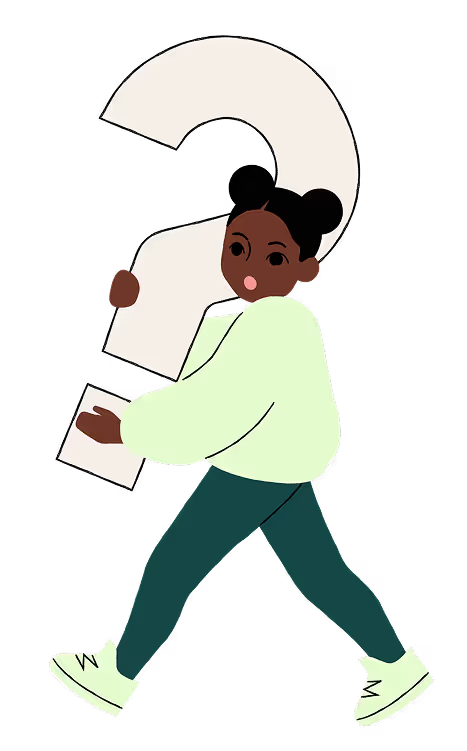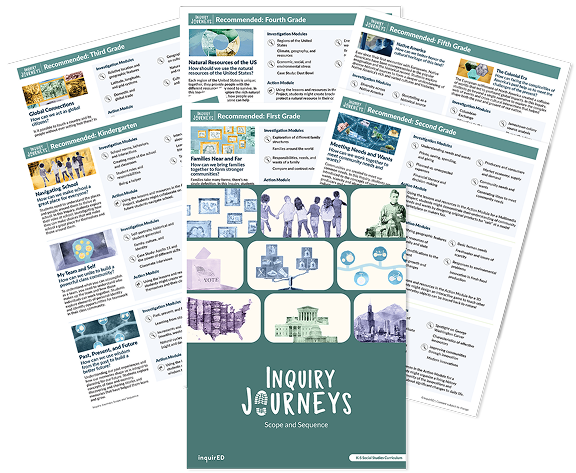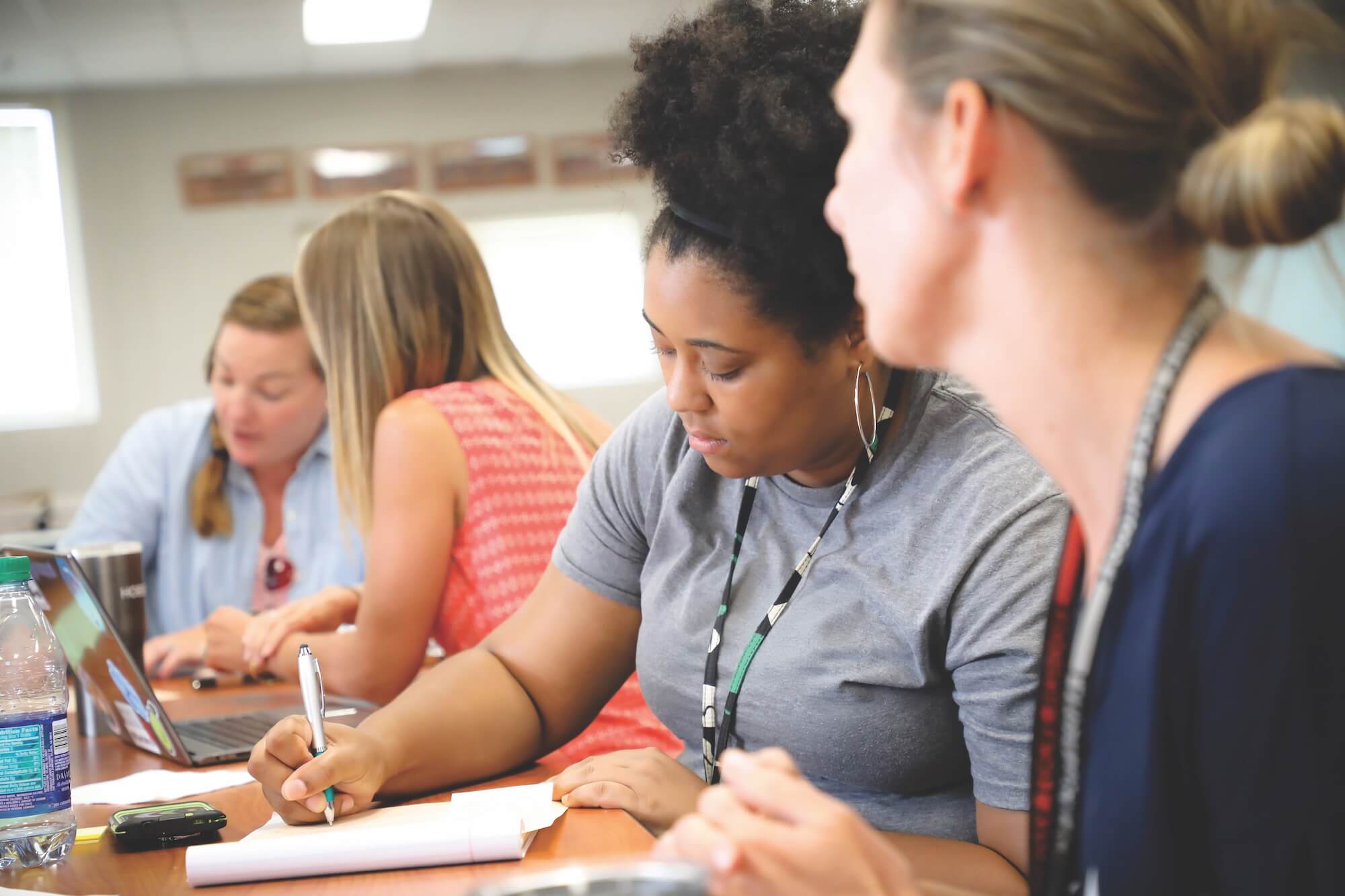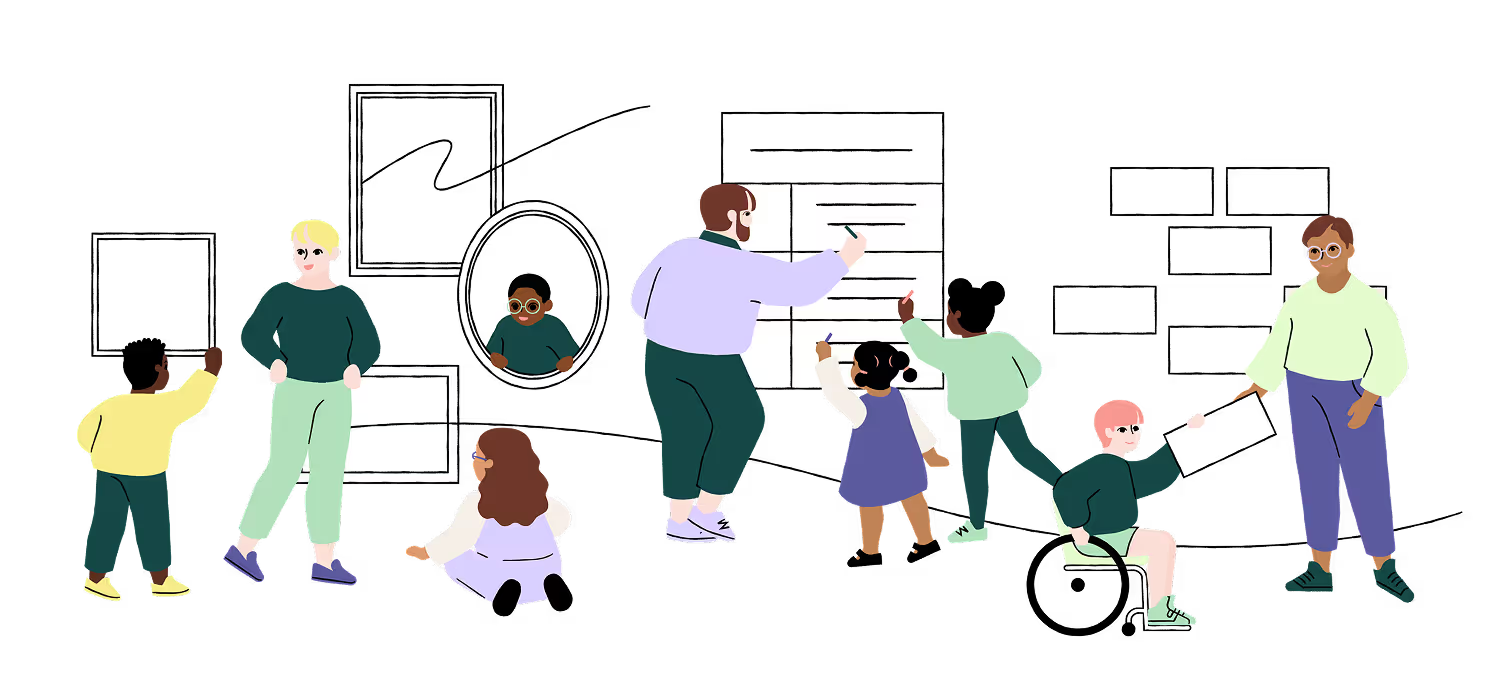Culturally Responsive Education (CRE) leverages the cultural knowledge, experiences, and strengths of all students to support deep learning, engagement, and success. While it’s tempting to look for a one-stop resource or magic-wand answer to the question: How do I practice Culturally Responsive Education? The reality is much more complex.
There is No Single Definition of CRE
There is not a single definition of CRE—or even a single term used when referring to its practice. But don’t let that complexity become a barrier. While the terminology may differ, these approaches share essential concepts and practices. With much more in common than in conflict, it can be helpful to clarify what CRE is—and what it is not.
What CRE Is Not
It might feel strange to define something by what it isn’t, but with so many misconceptions circulating, addressing them directly helps us build clarity.
- CRE is not an add-on or supplement. There is no siloed "CRE time" or dedicated workbook. Instead, CRE is a core instructional practice—embedded across subject areas and used consistently.
- CRE is not easy or watered-down instruction. CRE promotes rigorous investigation, deep knowledge building, and productive struggle.
- CRE is not a curriculum. No curriculum alone can be culturally responsive. Curriculum can support CRE, but it is the educator’s application—tailored to student needs—that brings culturally responsive practices to life.
- CRE is not diversity, inclusion, or multiculturalism. While those approaches often emphasize content, CRE is about how instruction is delivered. It centers the practices that build the intellectual capacity of culturally and linguistically diverse students.
- CRE is not only for culturally and linguistically diverse students. All students benefit from the critical thinking, knowledge building, and reflection that CRE fosters.
- CRE is not indoctrination or political ideology. Culturally Responsive Education is grounded in research-based instructional practice, not in political movements or frameworks such as Critical Race Theory. Its focus is on honoring students’ lived experiences, connecting learning to their cultures and communities, and supporting equitable academic growth for all learners.
What Culturally Responsive Education Is
Culturally Responsive Education is not a program or checklist. It’s a mindset and a practice that evolves over time.
- CRE is a research-based instructional practice. Grounded in decades of scholarship CRE centers on how all students learn best: by connecting new knowledge to what they already know and value.
- CRE is about relationships. At its core, CRE begins with knowing your students , their strengths, stories, communities, and experiences, and using that knowledge to shape instruction and classroom culture.
- CRE is rigorous and intellectually demanding. Culturally responsive classrooms challenge students to think deeply, grapple with complex ideas, and engage in productive struggle. High expectations and strong supports go hand in hand.
- CRE is asset-based. Instead of focusing on what students lack, CRE recognizes and builds from the rich cultural and linguistic assets every student brings to learning.
- CRE is reflective. Educators practicing CRE continually examine their own assumptions, instructional choices, and relationships with students to ensure all learners experience belonging and challenge.
- CRE is collaborative and community-centered. Learning happens through dialogue, questioning, and collaboration. Families and communities are partners in the learning process, not just participants.
- CRE is for every student. While it affirms the identities of culturally and linguistically diverse students, it benefits all learners by expanding perspectives, strengthening critical thinking, and deepening empathy.
Elements and Strategies That Support Culturally Responsive Practice
Connecting Learning to the Real World
When students apply their learning to authentic issues, they process information more deeply. High-quality learning experiences give students opportunities to:
- Use their knowledge and skills to address real-world problems and opportunities.
- Reflect on their role in their community and the impact of their learning beyond the classroom.
- See relevance between academic content and their lived experiences.
Talk to Learn
For many learners, oral language is a dominant form of meaning-making. Structuring time for talk helps all students process and own new ideas. Strong learning experiences include:
- Informal and formal opportunities for discussion.
- A variety of collaborative talk strategies—such as partner sharing, Socratic seminars, and small-group discussions.
- Reflection on how conversation deepens understanding.
Cognitive Routines for Deep Thinking
Repeated use of thinking routines helps students internalize and transfer learning. Effective routines include:
- Questioning and brainstorming protocols.
- Feedback and reflection cycles.
- Opportunities for students to plan, evaluate, and take ownership of their learning process.
Long-Term and Sustained Projects
Extended projects allow students to develop expertise, practice skills, and apply knowledge over time. These projects might include:
- Ongoing investigations into complex questions.
- Multi-lesson or multi-week projects that culminate in a public product or presentation.
- Opportunities for iteration, revision, and reflection.
Collective Learning and Collaboration
Many students learn best in environments that emphasize collaboration, community, and shared success. To honor collectivist cultural norms and diverse communication styles, teachers can:
- Incorporate cooperative learning structures.
- Use group problem-solving and consensus-building strategies.
- Encourage interdependence and shared responsibility for learning outcomes.
Non-Linguistic Representations
Visual and kinesthetic strategies help all students, especially multilingual learners, process and retain new information. Effective approaches include:
- Graphic organizers, flowcharts, and visual models.
- Anchor charts that evolve as learning deepens.
- Drawing, mapping, or modeling as ways to express understanding.
Stories, Metaphors, and Analogies
Narrative and figurative language support comprehension and meaning-making across cultures. Teachers can:
- Use stories, metaphors, and analogies to connect new concepts to familiar experiences.
- Invite students to share their own stories and cultural references as part of classroom learning.
- Encourage students to use narrative techniques to explain or represent what they’ve learned.
Why Social Studies Offers Unique Opportunities
Because CRE is grounded in daily practice, it applies across disciplines, but social studies offers distinctive opportunities to deepen that practice.
Social studies brings together disciplines focused on human relationships—civics, history, economics, geography, psychology, anthropology, and more. These fields allow students to explore themselves and their communities, affirming their different backgrounds and experiences.
Inquiry-based learning, when integrated into social studies, also complements CRE practices:
- Student questioning allows learners to take ownership of knowledge.
- Sustained investigation builds deep background knowledge that supports literacy development.
- Source evaluation encourages students to examine multiple perspectives and challenge single stories.
- Applying learning to the real world connects learning to students’ lives and experiences
Start Where You Are
One common barrier to implementing CRE is the belief that we’re not ready. Instead of focusing on what you aren’t doing yet, reflect on what you are doing. CRE is a process of layering—not a checklist to complete.
You already have strengths to build from. Start there. Over time, with intention and support, your practice will grow in complexity and impact.
Culturally Responsive Education (CRE) leverages the cultural knowledge, experiences, and strengths of all students to support deep learning, engagement, and success. While it’s tempting to look for a one-stop resource or magic-wand answer to the question: How do I practice Culturally Responsive Education? The reality is much more complex.
There is No Single Definition of CRE
There is not a single definition of CRE—or even a single term used when referring to its practice. But don’t let that complexity become a barrier. While the terminology may differ, these approaches share essential concepts and practices. With much more in common than in conflict, it can be helpful to clarify what CRE is—and what it is not.
What CRE Is Not
It might feel strange to define something by what it isn’t, but with so many misconceptions circulating, addressing them directly helps us build clarity.
- CRE is not an add-on or supplement. There is no siloed "CRE time" or dedicated workbook. Instead, CRE is a core instructional practice—embedded across subject areas and used consistently.
- CRE is not easy or watered-down instruction. CRE promotes rigorous investigation, deep knowledge building, and productive struggle.
- CRE is not a curriculum. No curriculum alone can be culturally responsive. Curriculum can support CRE, but it is the educator’s application—tailored to student needs—that brings culturally responsive practices to life.
- CRE is not diversity, inclusion, or multiculturalism. While those approaches often emphasize content, CRE is about how instruction is delivered. It centers the practices that build the intellectual capacity of culturally and linguistically diverse students.
- CRE is not only for culturally and linguistically diverse students. All students benefit from the critical thinking, knowledge building, and reflection that CRE fosters.
- CRE is not indoctrination or political ideology. Culturally Responsive Education is grounded in research-based instructional practice, not in political movements or frameworks such as Critical Race Theory. Its focus is on honoring students’ lived experiences, connecting learning to their cultures and communities, and supporting equitable academic growth for all learners.
What Culturally Responsive Education Is
Culturally Responsive Education is not a program or checklist. It’s a mindset and a practice that evolves over time.
- CRE is a research-based instructional practice. Grounded in decades of scholarship CRE centers on how all students learn best: by connecting new knowledge to what they already know and value.
- CRE is about relationships. At its core, CRE begins with knowing your students , their strengths, stories, communities, and experiences, and using that knowledge to shape instruction and classroom culture.
- CRE is rigorous and intellectually demanding. Culturally responsive classrooms challenge students to think deeply, grapple with complex ideas, and engage in productive struggle. High expectations and strong supports go hand in hand.
- CRE is asset-based. Instead of focusing on what students lack, CRE recognizes and builds from the rich cultural and linguistic assets every student brings to learning.
- CRE is reflective. Educators practicing CRE continually examine their own assumptions, instructional choices, and relationships with students to ensure all learners experience belonging and challenge.
- CRE is collaborative and community-centered. Learning happens through dialogue, questioning, and collaboration. Families and communities are partners in the learning process, not just participants.
- CRE is for every student. While it affirms the identities of culturally and linguistically diverse students, it benefits all learners by expanding perspectives, strengthening critical thinking, and deepening empathy.
Elements and Strategies That Support Culturally Responsive Practice
Connecting Learning to the Real World
When students apply their learning to authentic issues, they process information more deeply. High-quality learning experiences give students opportunities to:
- Use their knowledge and skills to address real-world problems and opportunities.
- Reflect on their role in their community and the impact of their learning beyond the classroom.
- See relevance between academic content and their lived experiences.
Talk to Learn
For many learners, oral language is a dominant form of meaning-making. Structuring time for talk helps all students process and own new ideas. Strong learning experiences include:
- Informal and formal opportunities for discussion.
- A variety of collaborative talk strategies—such as partner sharing, Socratic seminars, and small-group discussions.
- Reflection on how conversation deepens understanding.
Cognitive Routines for Deep Thinking
Repeated use of thinking routines helps students internalize and transfer learning. Effective routines include:
- Questioning and brainstorming protocols.
- Feedback and reflection cycles.
- Opportunities for students to plan, evaluate, and take ownership of their learning process.
Long-Term and Sustained Projects
Extended projects allow students to develop expertise, practice skills, and apply knowledge over time. These projects might include:
- Ongoing investigations into complex questions.
- Multi-lesson or multi-week projects that culminate in a public product or presentation.
- Opportunities for iteration, revision, and reflection.
Collective Learning and Collaboration
Many students learn best in environments that emphasize collaboration, community, and shared success. To honor collectivist cultural norms and diverse communication styles, teachers can:
- Incorporate cooperative learning structures.
- Use group problem-solving and consensus-building strategies.
- Encourage interdependence and shared responsibility for learning outcomes.
Non-Linguistic Representations
Visual and kinesthetic strategies help all students, especially multilingual learners, process and retain new information. Effective approaches include:
- Graphic organizers, flowcharts, and visual models.
- Anchor charts that evolve as learning deepens.
- Drawing, mapping, or modeling as ways to express understanding.
Stories, Metaphors, and Analogies
Narrative and figurative language support comprehension and meaning-making across cultures. Teachers can:
- Use stories, metaphors, and analogies to connect new concepts to familiar experiences.
- Invite students to share their own stories and cultural references as part of classroom learning.
- Encourage students to use narrative techniques to explain or represent what they’ve learned.
Why Social Studies Offers Unique Opportunities
Because CRE is grounded in daily practice, it applies across disciplines, but social studies offers distinctive opportunities to deepen that practice.
Social studies brings together disciplines focused on human relationships—civics, history, economics, geography, psychology, anthropology, and more. These fields allow students to explore themselves and their communities, affirming their different backgrounds and experiences.
Inquiry-based learning, when integrated into social studies, also complements CRE practices:
- Student questioning allows learners to take ownership of knowledge.
- Sustained investigation builds deep background knowledge that supports literacy development.
- Source evaluation encourages students to examine multiple perspectives and challenge single stories.
- Applying learning to the real world connects learning to students’ lives and experiences
Start Where You Are
One common barrier to implementing CRE is the belief that we’re not ready. Instead of focusing on what you aren’t doing yet, reflect on what you are doing. CRE is a process of layering—not a checklist to complete.
You already have strengths to build from. Start there. Over time, with intention and support, your practice will grow in complexity and impact.
